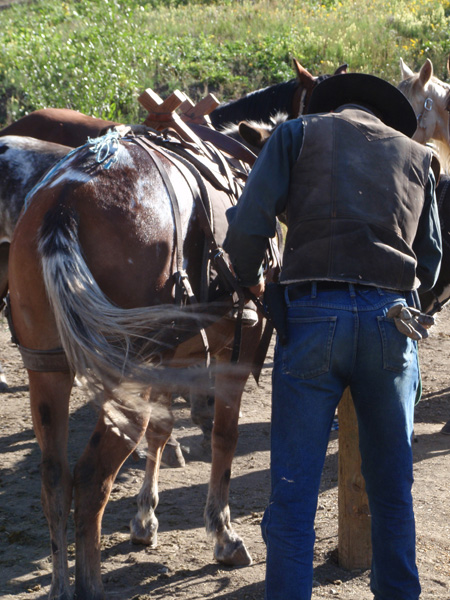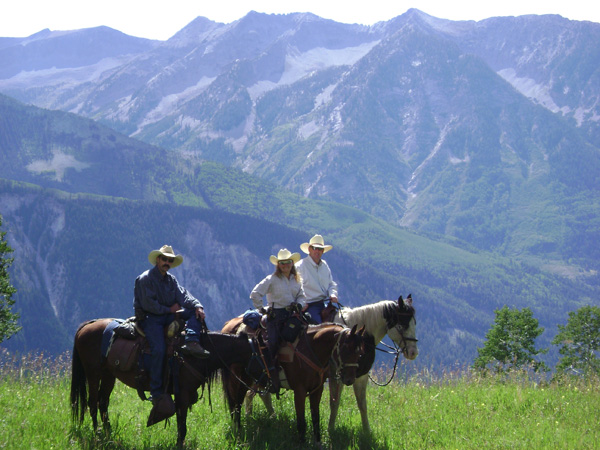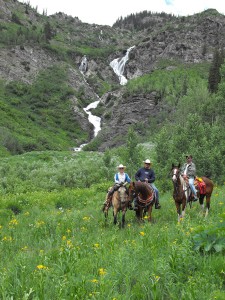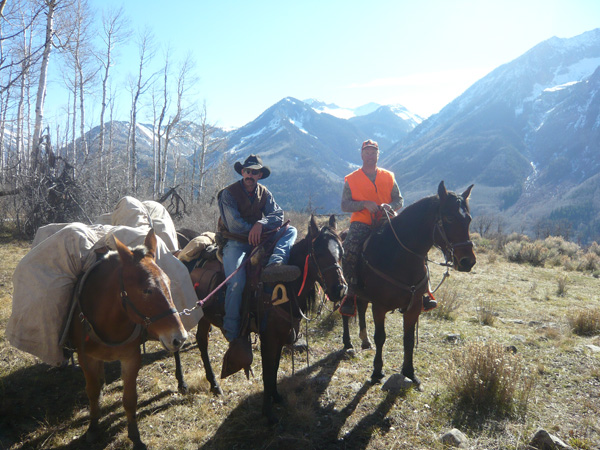The old West that was settled by horses, mule trains, and wagons has largely disappeared, but not in Marble. In Marble, it’s not uncommon to see horseback riders crossing the road or unloading horses at a trailhead to ride into the wilderness. The town still has a feel of the old West, and horseback riding is an important part of the summer activities offered in Marble. The network of trails surrounding Marble provides some of the finest horseback riding in the West.
The Dariens own access to the Lily Lake trail that leads to Placita and Big Kline, so permission must be obtained from them before accessing the Lily Lake trail.
Riders curious about the Marble trails should be advised that the terrain is steep, rocky, and sometimes tricky for novice riders and especially novice horses. Horses that are not in shape will find the going difficult, as almost all the trails gain a lot of vertical elevation in rugged terrain. The valley floor is at 7,800 feet, and all of the trails reach an elevation of at least 10,000 feet. Still others climb as high as 12,500 feet. Horses that are not used to trail situations will encounter streams, narrow trails, rocks, logs, and many of those imaginary “monsters” that young and inexperienced horses find spooky.
Experienced riders will enjoy the peace, serenity, and beauty of trails that rarely see other riders. Most of the trails are located in wilderness areas, and as such, are prohibited to ATV’s, mountain bikes, and 4WD vehicles. The terrain varies from oak brush and sagebrush hillsides at lower elevations, interspersed with giant Ponderosa pines and stands of Douglas fir, to vast aspen groves and open meadows at subalpine elevations. On north-facing slopes, riders will find large stands of “dark timber”—Englemann spruce intermixed with subalpine fir—and in places, avalanche chutes covered with mountain ash, chokecherry, and serviceberry. At high elevations (above 11,500 feet) there are wide expanses of alpine tundra intermixed with stands of short, dense pines called krummholz (“crooked wood” in German).
Horseback riders are reminded that once they’re in the wilderness, they may be far from immediate assistance. Cellular phones do not get reception in the Marble area, and quite often there won’t be other people in the area for hours or days at a time. Consequently, be prepared. Bring a jacket and slicker in case the weather turns cold, plenty of water, a lunch and some extra food, matches, and a knife in case you need to cut a leadrope or a cinch. Sometimes there will be downed logs across the trail, and it’s very handy to have a limbing axe or a bow saw tied on to your saddle.
For personal comfort, we suggest you bring chapstick and wear sunscreen, SPF 30-45. The sun is intense at high elevations, and exposed skin will quickly become sunburned if not protected. Sunglasses are also suggested.
Make sure your horses are well shod, because the Marble country is tough on their feet. A breastcollar is suggested for uphill climbing, and sometimes a crouper or breeching helps for descents. Leave the halter and leadrope on your horse, tying the leadrope off to the saddle horn. That way when you stop for lunch, you can tie your horse to a tree. When tying a horse up, tie him “short and stout”—that is, tie him up short to a stout tree or log. If you leave the leadrope long so he can graze, invariably he will step over it and get tangled up, making for a dangerous situation. If you tie him up to a dead aspen tree four inches in diameter, he’ll probably snap it off or pull it out of the ground, making for a real interesting lunchtime.
There is generally plenty of live, clean water to be found on Marble trails. Your horse won’t go thirsty. Let him drink all he wants when you’re crossing a stream, and your horse will stay well hydrated.
Remember that if you’re going for an overnight trip, you must abide by strict U.S. Forest Service “Leave No Trace” regulations. We suggest you call them and ask for a pamphlet on backcountry horse practices. Do not camp within 100 feet of running water or within 100 feet of a pack trail. Do not tie a horse to a live tree overnight. Tie your horses to a “highline” instead. Do not cut live branches or live trees. Do not hammer spikes or nails into trees.
For maps and information, contact the U.S. Forest Service in Carbondale at (970) 963.2266.



